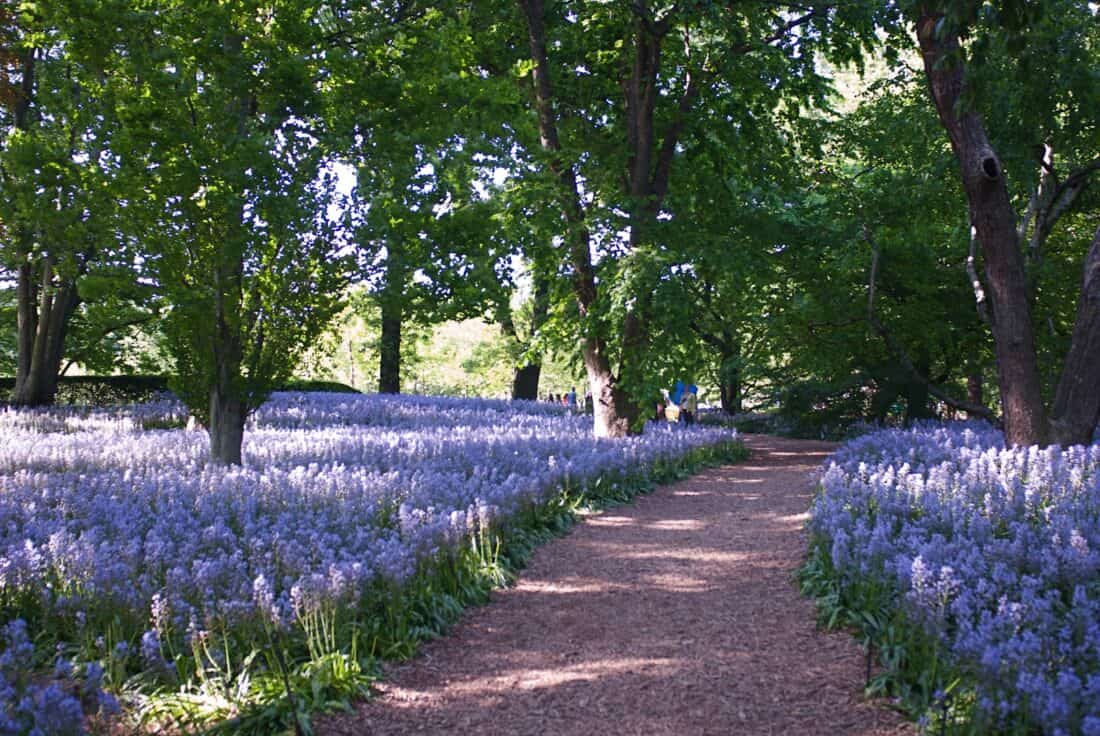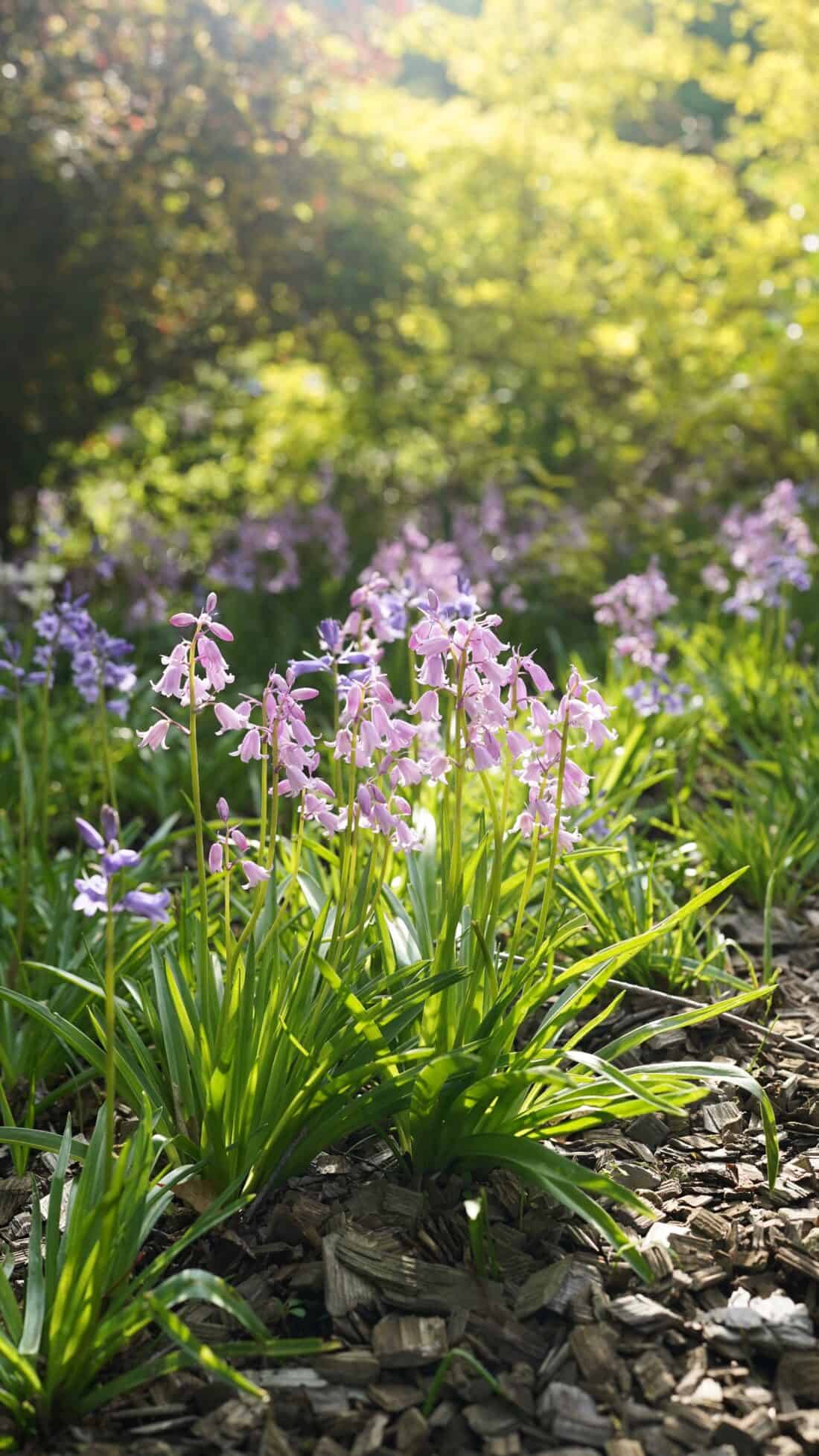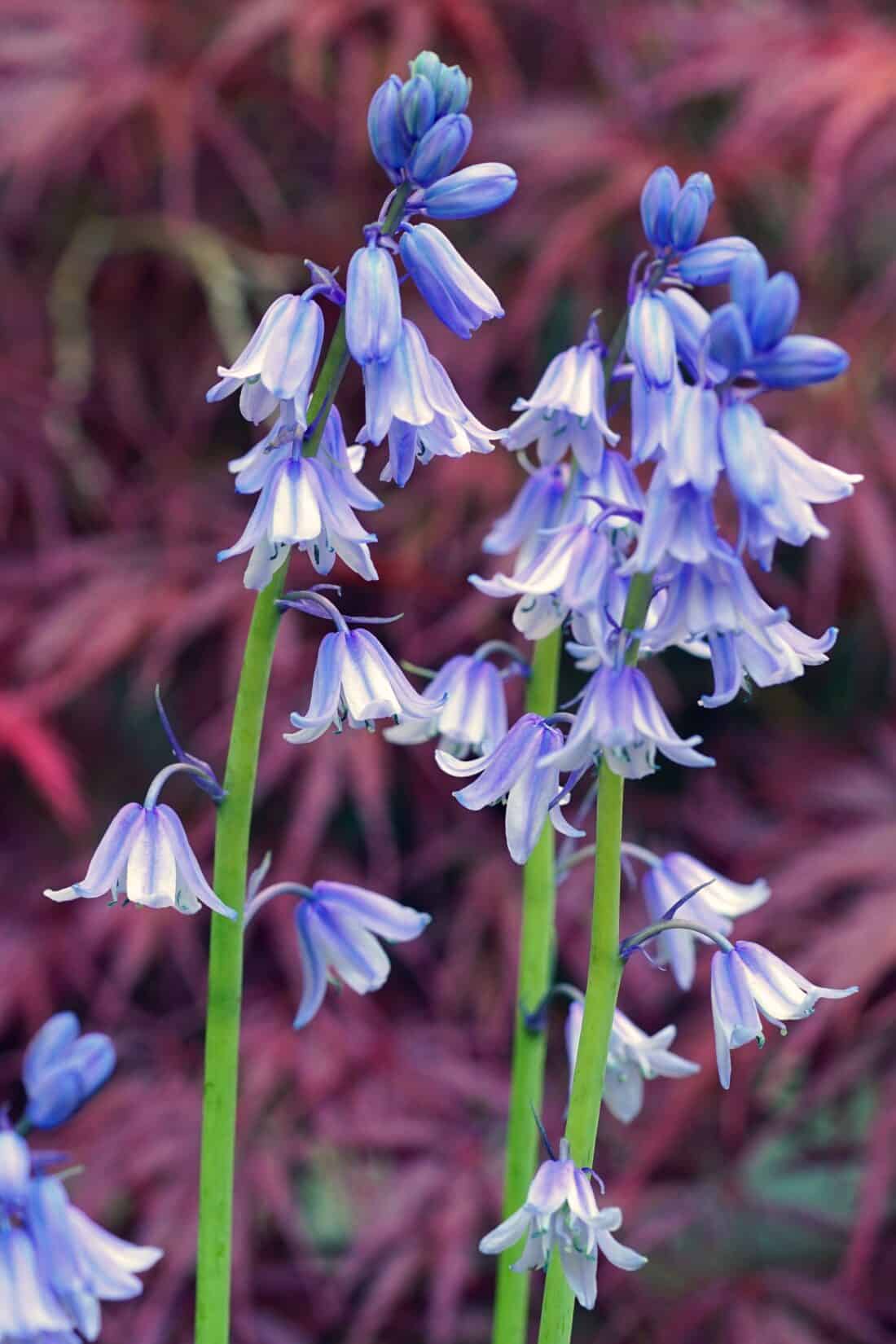When I first became passionate about gardening and horticulture in college, I would devour books and magazines about gardens and plants. I remember joining a magical garden book club where I think you bought one book, but that somehow got you an additional three free books. Did that exist, or am I having false memories? I have a shelf full of books from those days – written by the likes of Roy Lancaster, Rosemary Verey, and other English gardeners. Among the most impressive and memorable images I found (in several of these books) was of some awe-inspiring bluebell woods.
Growing up in Raleigh, North Carolina, I encountered poison ivy woods, kudzu woods, and even old tire dump woods, but nothing like the image I saw in these books.

The allure of Bluebell woods – Wood hyacinth in the landscape
The vision of these bluebell woods was magical. If you were to look up the word idyllic in the dictionary, there would be a picture of a bluebell wood – along with a unicorn casually sauntering under the oaks and amongst the plants. It was a romantic version of what a landscape could be.
That vision came back to me last week after nearly 20 years while visiting the Brooklyn Botanical Gardens. If you have never been before, there is a nice area where you can walk through a grove of Spanish bluebells under a bosque of mature trees.
Last week, all of the bluebells were in flower, and the understory was filled with lavender-blue flowers. The result was as impressive as it was in those buy-one-get-three free gardening books.

About Hyacinthoides hispanica – Spanish Bluebells
Spanish bluebells, or Hyacinthoides hispanica, are native to the Iberian peninsula (Spain and Portugal). They are prized for their light blue flowers and dark foliage. These bulbs will usually flower between the spring flowering tulips and, later, summer displays. After flowering, the foliage will stay up, resulting in a dark green, almost large-leaved liriope appearance. I have heard some gardeners say that they have a short flowering time and then a lot of foliage, but I, for one, do not mind the plants when they are done flowering. They have a nice and tidy mounding appearance.
Grow Spanish bluebells in full sun to partial shade and well-drained soil. Being able to thrive in significant shade is probably one of their greatest attributes. The soil should be rich and moist yet well-drained. If you have yet to grow Spanish bluebells, give them a try in a shaded part of your garden in need of some late spring color. Woodland gardens are their typical home.

If Spanish bluebells are invasive where you are (check the USDA website; they are currently suspicious of becoming invasive in some southern states), you can switch to a native bluebell. Virginia Bluebells (Mertensia virginica) are a great alternative option to English bluebells and Spanish bluebells that are native to the North American region.
– Rodney
More Spanish-inspired posts and interesting woodland bluebell-like plants.
Hello Rodney – Gorgeous and perfect picture! I loved your story about the magical bluebell vision coming from Raleigh. I grew up and Charlotte and am wondering why don’t we have more spanish bluebells here? Can you please recommend where to order bulbs in large quantities — and any other guidance on keeping deer/critters away? I have a large lot and want to create my own magical woodland.
I just loved reading about these flowers! The way they add a touch of elegance to any garden is truly special. I completely agree with your point about how they thrive in slightly shaded areas. It’s great to see such a well-rounded guide for gardeners looking to incorporate these beauties. I also appreciate the tips on maintaining them through different seasons!